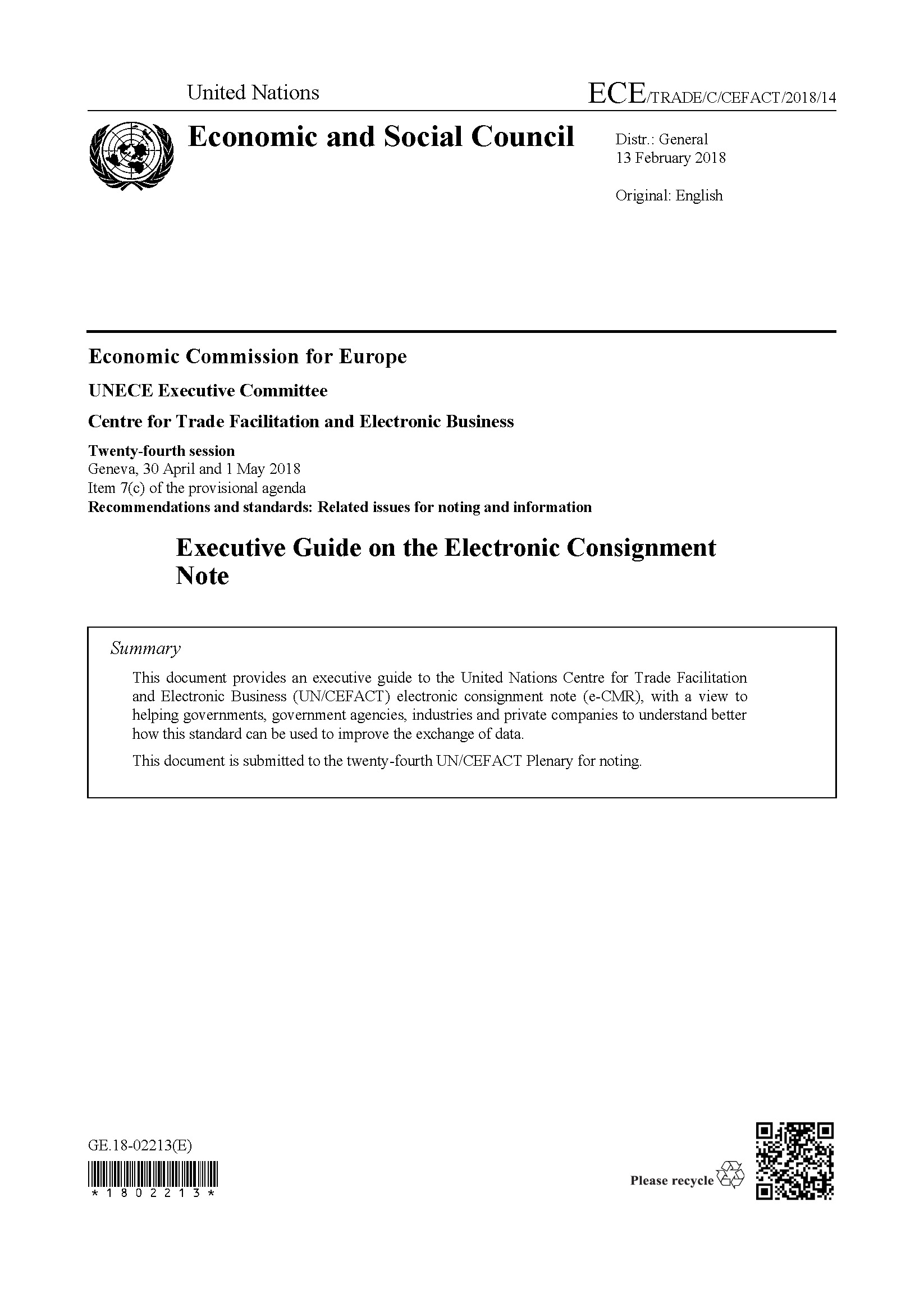
The Convention on the Contract for the International Carriage of Goods by Road (CMR) was developed in 1956. This convention standardizes contractual and carrier liability conditions of transporting goods by road in vehicles for reward if the origin and destination are in two different countries, and at least one of the countries is a contracting party. It has been acceded to by 55 states around the world, thus making the use of the CMR obligatory in these countries. In 1976, the International Road Union introduced a United Nations Layout Key aligned CMR Note template in cooperation with the International Chamber of Commerce. This road consignment note template was updated in 2007 and is now used by most, if not all, parties to contracts of carriage in CMR contracting countries.
The Convention on the Contract for the International Carriage of Goods by Road (CMR) was developed in 1956. This convention standardizes contractual and carrier liability conditions of transporting goods by road in vehicles for reward if the origin and destination are in two different countries, and at least one of the countries is a contracting party. It has been acceded to by 55 states around the world, thus making the use of the CMR obligatory in these countries. In 1976, the International Road Union introduced a United Nations Layout Key aligned CMR Note template in cooperation with the International Chamber of Commerce. This road consignment note template was updated in 2007 and is now used by most, if not all, parties to contracts of carriage in CMR contracting countries.
The CMR Note is primarily used for commercial transport contract purposes (business-to-business) and is often used by law enforcement and customs authorities for checking the goods details and consignor/consignee/carrier information for clearance in cross-border trade, or additional information in different situations.
In 2008, an Additional Protocol on e-CMR was introduced to support paperless versions of the e-CMR Note. Though several pilot tests have been conducted in the subsequent years, there has not been an official standardized message format for the Electronic Consignment Note. In 2017, a United Nations Centre for Trade Facilitation and Electronic Business project developed a business requirements specification, core component e-CMR message structure and XML message standard.
The Executive Guide is also available in French and Russian.
The eCMR Standard package contains the following elements: